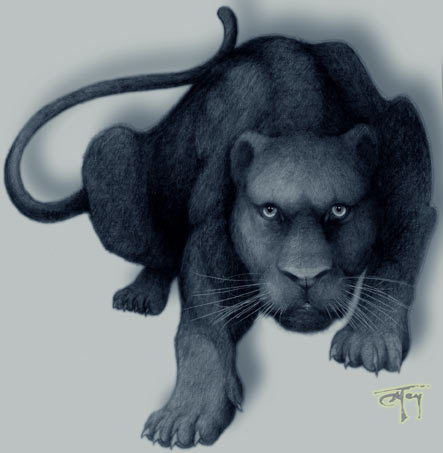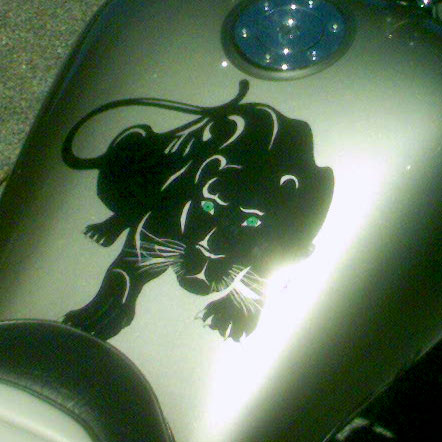
The
term ‘
Black
Panther’ is quite
often used in connection with large black
cats - or with an African-American organization
back in the 60's founded on the concepts
of civil
rights and self-defense, but I digress...
there is no distinct species of wild
cat labeled as a
Black
Panther. It has become a common
name to mark any large black
coated feline. When you see a photo
of a
Black
Panther it is most likely that
you're looking at either a
Leopard
(
Panthera pardus)
or possibly a
Jaguar
with Melanistic coloration. In cats,
melanism results in the fur of the animal
being very dark or black in colour.
In many cases the usual markings of
the feline can be faintly seen through
the dark fur, especially at certain
angles in bright sunlight. Melanism
occurs because of a mutation or abnormality
of one of the cats genes which is associated
with coat coloration and markings. Melanism
is hereditary, but is not necessarily
passed directly from one generation
to the next - it is therefore common
to see ‘mixed’
litters with one black cub along side
normally coloured brothers and sisters.
Melanisim can also occur in other species
of wild cat -
black coated caracal,
Geoffrey’s cat, margay, bobcat,
ocelot, jaguarundi and serval
have been noted in the smaller cats as
well as occasional mention of the coloration
in the larger
lion, tiger
and
cougar.
Melanistic leopards are more commonly
found in the dense tropical rain forests
of southwestern
China,
Myanmar,
Assam and
Nepal,
from
Travancore and
other parts of southern
India and are
common in
Java and the
southern part of the
Malay
Peninsula where
they may be more numerous than spotted
leopards. They are less common in tropical
Africa,
but have been sighted in
Ethiopia (formerly
Abyssinia), from the forests of
Mount
Kenya and from the
Aberdares. - it is
thought that the dark coloration acts
as better camouflage in the low light
conditions of the forest floor, giving
the cat an advantage in hunting. If this
is the case, it is also possible that
a black leopard will also be at an advantage
in being able to provide more food for
its young and as a result the probability
of the melanistic gene being transferred
through the population will be greater.
Throughout history, the
Leopards territory reached
from the
British Isles
to
Japan and throughout
Asia. Now restricted to Africa and Asia,
it has survived, in spite of homo sapien
predation.






